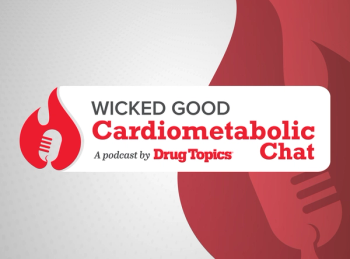
Long-term data reinforce safety profile of dabigatran
Results from the RELY-ABLE trial, the RE-LY extension study, support the long-term safety profile of dabigatran etexilate mesylate (Pradaxa, Boehringer Ingelheim Pharmaceuticals) 150 mg twice daily in patients with nonvalvular atrial fibrillation (NVAF), according to a study published in Circulation in mid-June.
Results from the RELY-ABLE trial, the RE-LY extension study, support the long-term safety profile of dabigatran etexilate mesylate (Pradaxa, Boehringer Ingelheim Pharmaceuticals) 150 mg twice daily in patients with nonvalvular atrial fibrillation (NVAF), according to a study published in Circulation in mid-June.
The RELY-ABLE trial was designed to evaluate the long-term safety of ongoing dabigatran therapy in patients with NVAF, following RE-LY. Patients enrolled in RELY-ABLE continued dabigatran therapy, as dosed in RE-LY, for an additional 2.3 years, bringing the mean duration of treatment to 4.3 years. A total of 5,851 patients participated in the extension study: 2,937 received dabigatran 150 mg twice daily and 2,914 received dabigatran 110 mg twice daily.
Rates of major bleeding, the primary end point, were 3.74% (n=238) per year with dabigatran 150 mg and 2.99% (n=190) per year with dabigatran 110 mg (HR 1.26, 95% CI: 1.04-1.53). Major gastrointestinal bleeding occurred at rates of 1.54% (n=98) per year with dabigatran 150 mg and 1.56% (n=99) per year with dabigatran 110 mg.
Secondary end points included other key safety outcomes, such as total bleeding and life-threatening bleeding, and showed similar results as RE-LY, with no new safety findings.
“The encouraging long-term safety results from RELY-ABLE add to the growing body of data reinforcing Pradaxa as an important treatment option for patients with NVAF,” said John Smith, MD, PhD, senior vice president, clinical development and medical affairs, Boehringer Ingelheim Pharmaceuticals.
An estimated 2.3 million Americans have atrial fibrillation (AFib), making it one of the most common heart rhythm disorders. “It is projected that 5.6 million U.S. adults will have AFib by 2050, so we believe the need for OACs [oral anticoagulants] will continue to increase in the coming years,” Smith said. “The primary goal of anticoagulant therapy in patients with AFib is to reduce the risk of a clot forming in the heart and traveling to the brain, causing an ischemic stroke.”
Nearly 9 out of 10 strokes caused by AFib are ischemic strokes.
Dabigatran etexilate mesylate is the first treatment among the new generation of OACs to be evaluated in a large set of NVAF patients for more than 4 years. “Data from RELY-ABLE also contribute to the evidence supporting the safety profile of Pradaxa, including the most recent analyses of real-world safety data from the FDA Mini-Sentinel initiative,” Smith concluded.
Newsletter
Pharmacy practice is always changing. Stay ahead of the curve with the Drug Topics newsletter and get the latest drug information, industry trends, and patient care tips.






































































































































